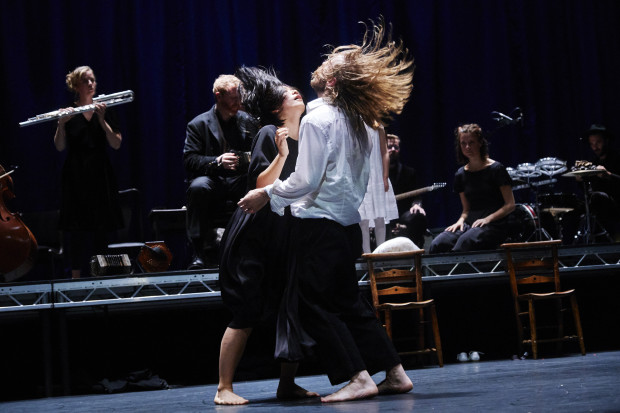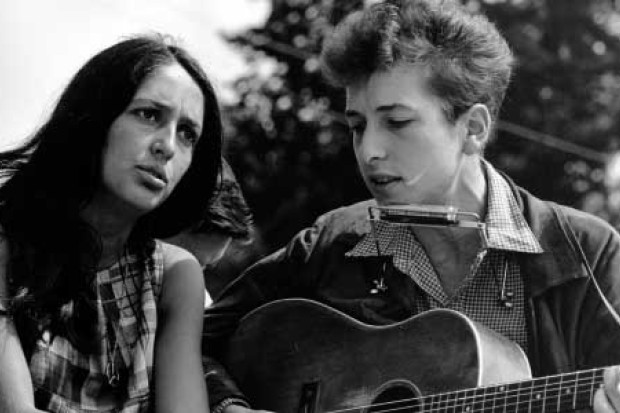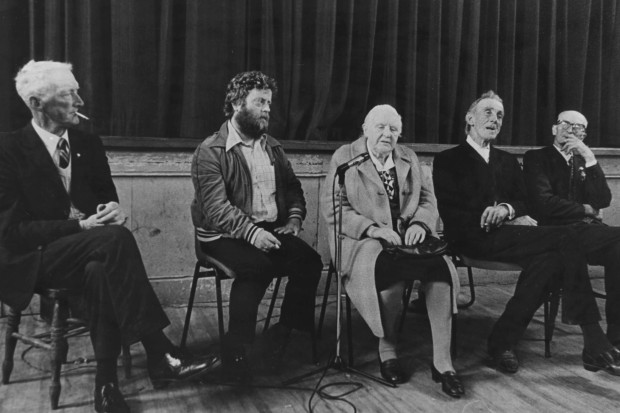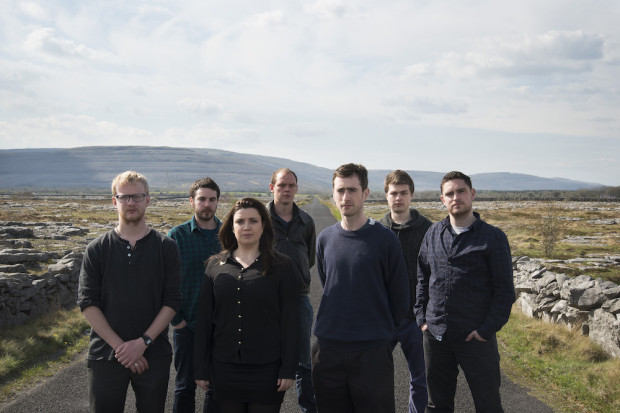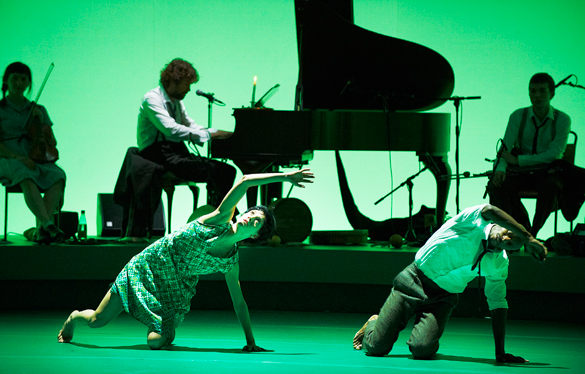
No Movement Without Rhythm
A collaboration between the choreographer Michael Keegan-Dolan of Fabulous Beast Dance Theatre and the musician Liam Ó Maonlaí, Rian audaciously juxtaposes Irish traditional music, unadulterated, and self-assured contemporary dance.
The production takes Ó Maonlaí’s 2005 album — a homage to the composer Seán Ó Riada — as its starting point, and opened on the very stage where the Ó Riada sa Gaiety concert took place in 1969. Neatly, in respect to its dualism, the production has more recently gone to one of London’s best-known modern dance houses, Sadler’s Wells.
Elements such as a harp centre-stage, a recording of ‘Mo Ghile Mear’ on harpsichord as the curtain-raiser, and costumes similar to what Ó Riada’s Ceoltóirí Chualann group would have worn, immediately placed the musical side of the production explicitly within the tradition. On the other hand, the opening dance piece, performed in silence and presenting quite formal movement and gestures, was in a courtly mode, and made one wonder if any connection with traditional music was possible.
When the dance and music were combined, in a lively version of ‘Sadhbh Ní Bhruinnealla’, it took a moment to ascertain their relationship, but relate they did, and magnificently. Though the dancing owed none of its movements to traditional Irish forms, there was a clear appreciation of the rhythms of the music to be seen. Indeed, the melodic and rhythmic idiosyncrasies of Irish tunes were, at times, complemented to such an extent that a person unfamiliar with actual Irish dancing may have assumed this to be it.
The variety of movements and gestures that had been developed by Fabulous Beast kept monotony at bay, and the responsiveness of the dancers to the subtleties and improvisations in the music, particularly for me in the ‘Master Crowley’s’ set of reels and the set of polkas, was impressive. Ultimately contemporary but referencing many traditions around the world, the choreography seemed to be aiming for a playfulness that was at times cheeky but more often joyful and celebratory.
Occasionally, the distinction between music and dance blurred. ‘Il n’ya pas de mouvement sans rhythme’ is the title of one of a number of Malian songs, and this synthesis was highlighted by a directorial ploy that had the musicians dancing and the dancers music-making at times. The dancers drew a particularly joyful clamour from the audience by lilting along to ‘Port na Deoraí’ and joining in for the chorus of ‘Nead na Lachan sa Mhúta’.
Structurally, Rian didn’t appear to have a discernable narrative; each set-piece was an isolated event with its own mood or focus, at times exploring two- or three-way relationships between dancers, at other times more complex group and inter-group dynamics; at some points the show reflected a sense of melancholy or struggle, and at others it celebrated energy, fun and humour.
There was, however, an element of exegesis underlying the choreography, as if Keegan-Dolan wanted to display, for those less familiar with Irish traditional music (as he was himself before this work) how it is built up, layered, repeated, varied and lifted.
This was one of those occasions when thoughts of tension between tradition and innovation could be set aside. What could have ended up a hybrid mess of equally compromised contrasting aesthetics, turned out to be a beautiful expression of resonance, of universality, and of a modus vivendi for these particular art forms.
Published on 26 October 2011










